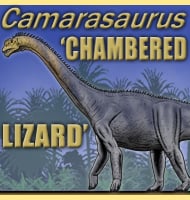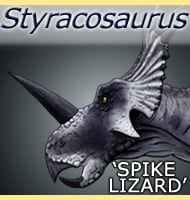In Depth
The incredibly broad range of Kannemeyeria fossils indicates that it probably had a worldwide distribution, especially across the southern continents. It is unknown how far north the full extent of Kannemeyeria was, but other similar dicynodonts such as Placerias are known from North America.
Kannemeyeria is what you might call a typical large dicynodont in that it possessed a cropping beak for snipping vegetation as well as two downwards pointing tusks that may have been used for digging up roots and tubers. Kannemeyeria was towards the larger end of the dicynodont size scale, a size that was required to house the extensive digestive system that was required to process plant material. To support this weight and bulk the limb girdles was well developed to allow Kannemeyeria to browse the Triassic plains at a slow but stable gait.
The skull of Kannemeyeria has large fenestral openings that not only would have significantly reduced the weight of the skull. There are also areas for strong muscle attachment, something that would have provided the beak of Kannemeyeria the ability to shear through the toughest plant material.
Despite the large size, Kannemeyeria may have been prey to large thecodonts like Erythrosuchus.
Further Reading
– The Skull of the Dicynodont Reptile Kannemeyeria. – Proceedings of the Zoological Society of London – Vol 94, Issue 3, pages 793–826 – Helga S. Pearson M.Sc., F.Z.S – 1924. – A further contribution to our knowledge of the fossil reptiles of the Karroo. – Proceedings of the Zoological Society of London 107(3):299-318. – R. Broom – 1937. – A taxonomic note concerning a dicynodont (Synapsida: Anomodontia) from the Middle Triassic of East Africa. – Palaeontologia africana 39:93-94. – A. J. Renaut, R. J. Damiani, A. M. Yates & P. J. Hancox – 2003.- Dicynodonts (Therapsida: Anomodontia) of South America. – Journal of South American Earth Sciences. – C. F. Kammerer & M. D. Ordo�ez – 2021.










